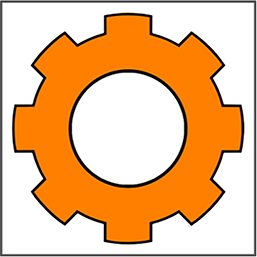Ordinary Matter
- Deborah Benioff Friedman, Phyllis Lasché, and Gina Telcocci
- The Gearbox Gallery
- November 20, 2020 through January 2, 2021
- Fridays and Saturdays, noon to 5:00 p.m.
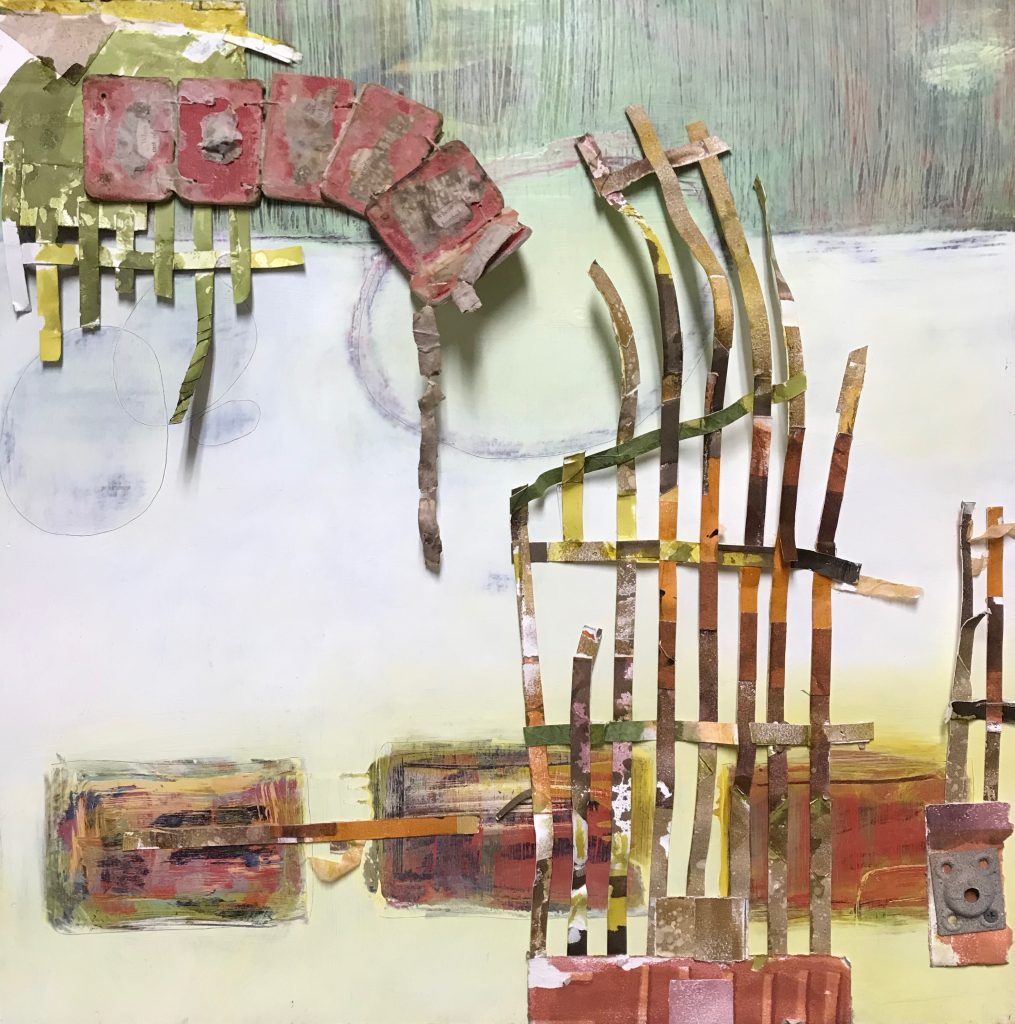
“Stone Soup is a European folk story in which hungry strangers convince the people of a town to each share a small amount of their food in order to make a meal that everyone enjoys, and exists as a moral regarding the value of sharing. In varying traditions, the stone has been replaced with other common inedible objects, and therefore the fable is also known as axe soup, button soup, nail soup, and wood soup.” Wikipedia
“As artists, the three of us are observing and working with ordinary matter – the unnoticed, the discarded, extraneous, the disreputable and the beautiful scraps and fragments that we participants of this world leave in our wake.” Excerpt from Stone Soup Statement
When did you begin this collaboration?
PL: It was in November a year ago.
Whose idea was it?
PL: It was Deborah’s idea.
DBF: I used to be in a group with Lisa Kokin (http://www.lisakokin.com) and we used to do this thing where every six months everyone would bring in a failed piece of art in a brown paper bag and give them out to each other and take it home to work on it and make something out of it. And I found that really stimulating and interesting. Phyllis and I had our show together last year and we were talking and thought it would be fun to do (collaborate) and then decided we should invite Gina.
GT: Thanks guys!
Well, even though your work is very individual and different, these pieces work together. And even when you work outside of this collaboration, you seem to share a similar aesthetic. Simple things like tonalities, you all use neutral, natural or quiet colors.
DBF: In the shows I used to enter I always saw Gina’s pieces there (an aesthetic correlation).
So I looked up the reference in your statement to the Dada idea of the “exquisite corpse” and found this, “Exquisite corpse, also known as exquisite cadaver, is a method by which a collection of words or images is collectively assembled. Each collaborator adds to a composition in sequence, either by following a rule or by being allowed to see only the end of what the previous person contributed.” Wikipedia. (A discussion ensued about their process wherein each would bring a failed work to the others who would each take her turn at working on it before passing it on to the next and in this way it would circulate between the three of them until all agreed that it was finished. Nothing was off limits. The work could be manipulated, torn apart, added to, painted on, or even burned.)
So let’s take three pieces, one at a time, one originating with each of you and follow it through the collaborative process.
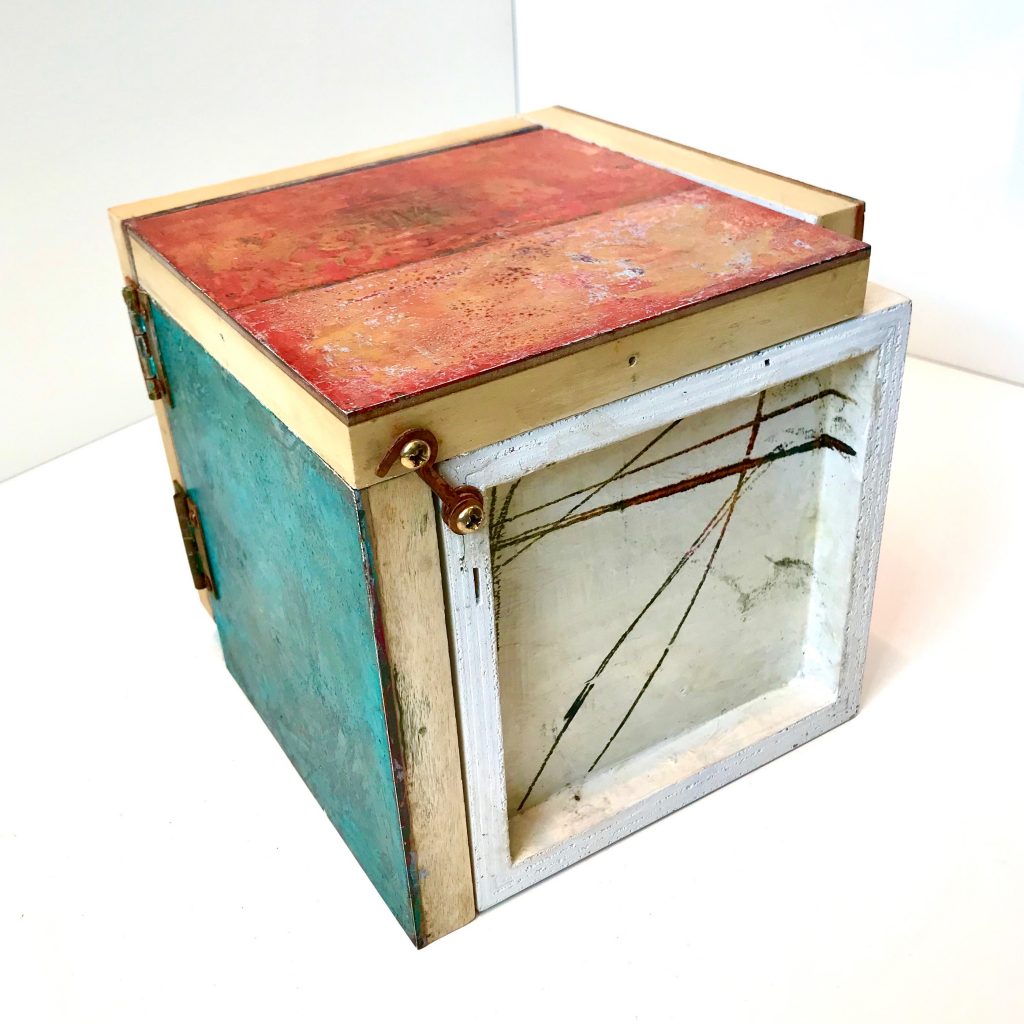
PL: Okay, I can talk about Icebox. (Much confusion figuring out how to “share screen” in a Zoom call!). I have about twelve little pieces, 6 by 6, oil and cold wax on wood panels. So, the six sides of Icebox were all my first attempts using the cold wax. I went to a workshop with Rebecca Crowell (https://www.rebeccacrowell.com) and learned the technique from her. I am interested in layering and revealing bits of history underneath and the wax lends itself to that. So, instead of bringing just one piece to the others, I decided to bring these six small pieces and gave them to Deborah.
GT: Phyllis, why are these done up on both sides?
DBF answered: I played around with them and I was frustrated because it seemed anything I would do with them would involve destroying them, taking a hammer to them, so I began instead by building structures and because the back sides would be visible I painted them with gesso to be white.
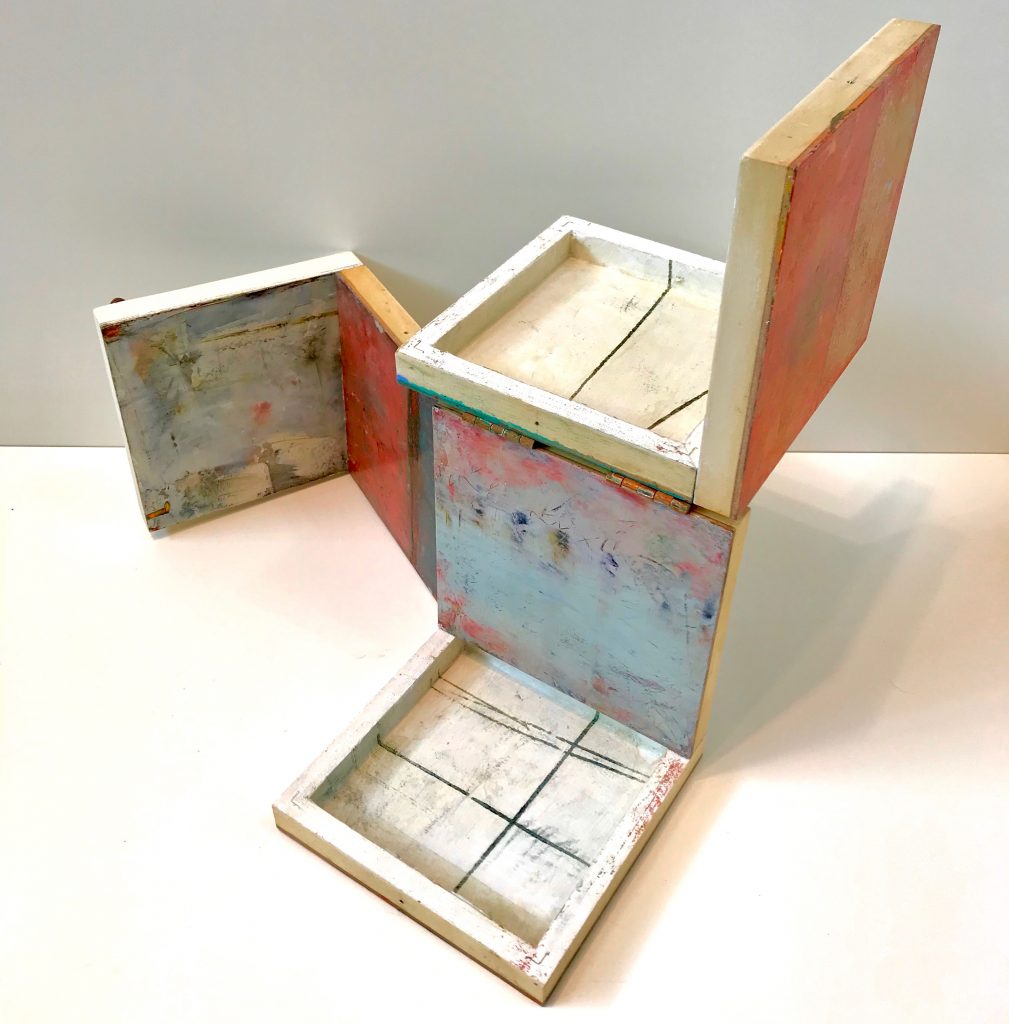
So it began with Phyllis’ six panels, then Deborah joined them in sets of two and painted the back sides white.
PL: And then it went to Gina and she put it together in this amazing thing.
GT: Yes, but I didn’t make those marks on the panels.
PL: No, it came back to me and I worked on the back sides of the panels.
Oh, so it came back to you Phyllis?
GT: It keeps circulating, Dennis, until we decide that it’s done.
PL: So I used tissue paper (on the back sides of the panels). I use it to remove paint from a painting and normally then throw it away. And sometimes I will incise a layer and that is what those lines are.
And at that point it was finished?
PL: Yes, it would have gone back to the others and I think everyone decided it was finished.
Was there any one piece that went through more than one cycle of the three of you?
GT: Some of them went through several times.
PL: I think some of them went through two full cycles.
Okay. I just wondered how many transitions a piece might have gone through between you before you decided it was finished.
GT: I feel very strongly that they don’t belong to any one of us, they belong to all (three) of us.
Yes, that seems central to the idea of the collaboration.
Deborah, please pick a piece that began with you.
DBF: Let’s do Sea Creature 7. There’s a metal thing that it began with and then there’s paper attached to it. And that is what went to Phyllis.
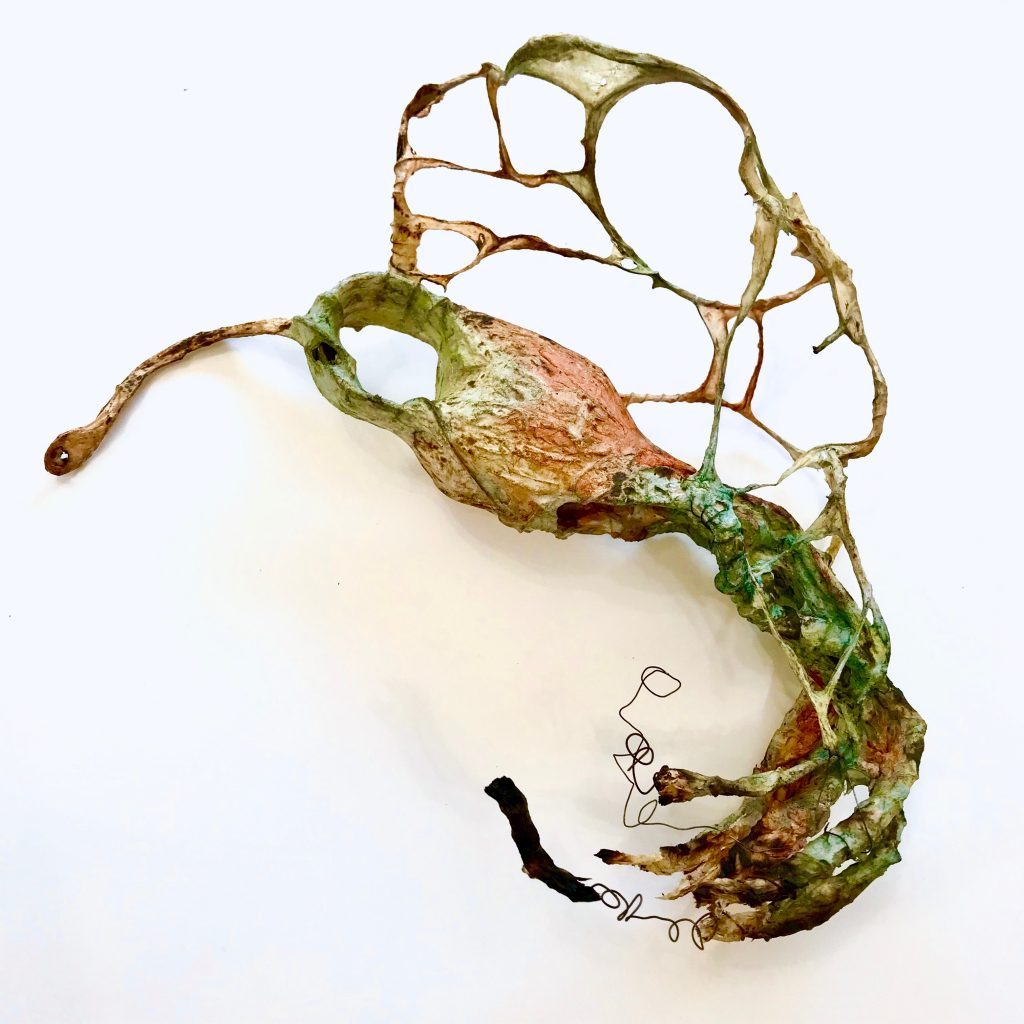
How much time do you work on a piece like this, before it’s passed on?
DBF: Well, this was done years ago and I have a box of failed pieces but I’m pretty stubborn so I keep working on it. So this piece probably got dipped in paper pulp, maybe ten times. Dipped and dried. Dipped and dried. And it takes time to dry.
You can control the viscosity of the pulp to create these skin-like areas.
So, from you it went to whom?
PL: Gina didn’t work on it so it came to me. It would have been off-white. So when I got it, I wasn’t sure what to do with it and I talked to Deborah and she said, “Well, run it over with your car or burn it or something.” And I thought, oh yeah, burn it! So the first thing I did was add color to give it some sort of biological life. And it has this clunky thing that looks sort of like a padlock shape. (Discussion and determination that it was a part of a fence.) And then I burned part of it and watched as those little wires appeared (at the bottom of the piece).
It looks to me like one of those bizarre creatures found in the depths of the ocean.
PL: One of the things that is so interesting is the surprise I run into where I don’t know how Deborah does what she does. I didn’t know there was this mass of wires inside the paper pulp and only found out by the burning.
Did any of these collaboration pieces utterly fail?
GT: I think we have a couple of those. I have one in my studio but I’m not ready to throw it away.
But weren’t some of these failures to begin with?
DBF: Yes, all of them were.
But in the collaboration on any one piece did you collectively decide it wasn’t working and decide to move on?
DBF: I don’t think we actually abandoned anything. There are some that are “on hold” indefinitely but I think we have hope that one of us will come up with something that will take it in a new direction. So I don’t think it is something we give up on. In the same vein, although we might consider a piece finished, it doesn’t mean in six months we might not have something more to do on it. So it is a sort of continuum.
Well, I think all three of you are pretty stubborn!
PL: Passionate is the word.
By stubborn I mean you probably work on it until it works.
GT: There have been times we will get a piece and won’t know what to do with it. Sometimes when a piece goes around but doesn’t change significantly from when I put it in there, I tend to not like it.
So all these pieces were taken from things set aside, none of them were created for the collaborative process?
GT: Yeah. It’s a great way to recycle the stuff.
Would any of you take a piece you were happy with and send it through the collaborative process?
All: No.
DBF: There’s a certain pain involved. You’re letting go of something you’ve invested time in and it may get trashed; burned or run over by a car or whatever.
(Brief discussion of collaboration throughout art history, specifically in the Renaissance and Medieval Periods.)
In a way it is almost nihilistic; you’re starting with something you’re not happy with and throwing it out such that the others can do whatever they want to do to it and I can see almost a terror in that. I don’t think I could do it. I’m too selfish about my work.
GT: Well, I’m as selfish as the next person but I think this is fabulously freeing and fun. You said nihilistic but for me it is the opposite. It is the most positive thing that can happen. I can clean out my studio of rejects and hopefully see them come to life.
Well, I applaud you for it. Obviously there is a sort of collegiality between you that allows for it to work. (There followed an amusing discussion about a large canvas Phyllis gave to Deborah who didn’t know what to do with it but painted it out with gesso, cut holes in it and passed it on to Gina who sanded it. Then Phyllis got it back, worked on it and Deborah said, “It’s upside down.”) Do you see the transition go so far that you sometimes no longer see your own work in it?
All: Close.
DBF: So I had this really large piece that I had spent hours and hours on but it just wasn’t working so I gave it to Phyllis and she ripped it to shreds and I felt sad. But then it went to Gina and she resurrected it into these beautiful little boxes and there is enough left of me in it that I can see it. So that was a really satisfying ending to that piece.
Well, that’s a little like someone being killed in an auto accident and their heart going to someone else! (laughter)
GT: I haven’t felt bad about what anyone has done to one of my pieces except one time (laughter). It had gone around and at one time Phyllis bent the piece and that was painful (laughter). But somewhere in the process, I was relieved to see that someone bent it back.
PL: That’s one of those pieces that may have gone around two or three times and now it’s been set aside.
GT: No, I took that one back!
Okay, Gina, pick a piece that began with you.
GT: Okay, Trap. It looked too cute to me. When it left me it didn’t have that top part.
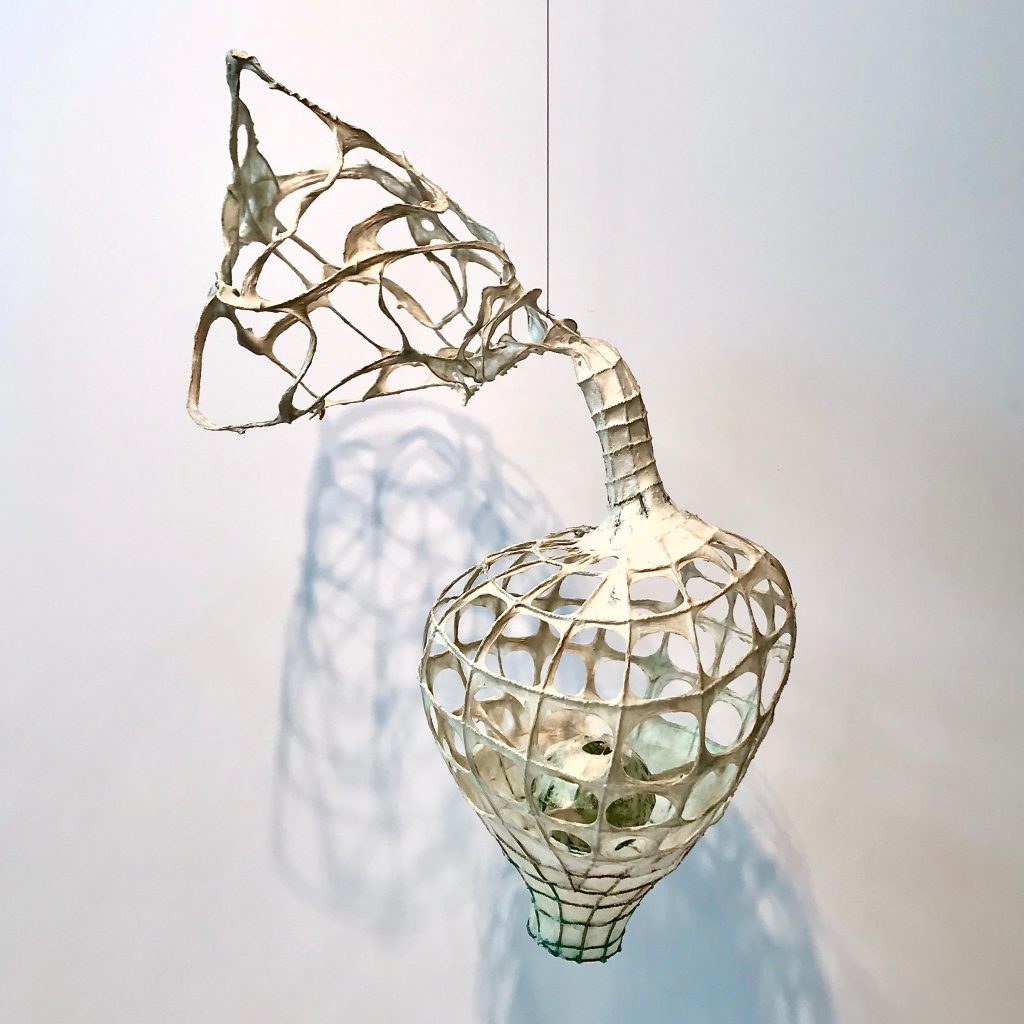
The top looks like something Deborah would have done.
DBF: Yep.
And Phyllis, what did you do to this piece?
PL: I think I added color. Or maybe I didn’t do anything. No, I think I added the green to the top part.
One of the things I love about it is the cast shadows when you hang it in a space.
So this one basically went bing, bang, boom, from Gina to Deborah to Phyllis and it was done?
PL: I believe so. Pretty direct. But sometimes we will rip a piece up into bits and pieces and send those along with another piece so one originating work may end up being a part of other works. Trainwreck is an example of that (photo at top of post). The pink shape drooping in from the top left is from one piece but the latticework on the right side is from another piece. The underlying piece was one of sixteen painting panels I did in collaboration with another artist, Robbin Milne, in 2003. And that little metal piece at bottom right was something just lying in my studio.
I’d like to talk about Dictionary. It’s one of my favorites.
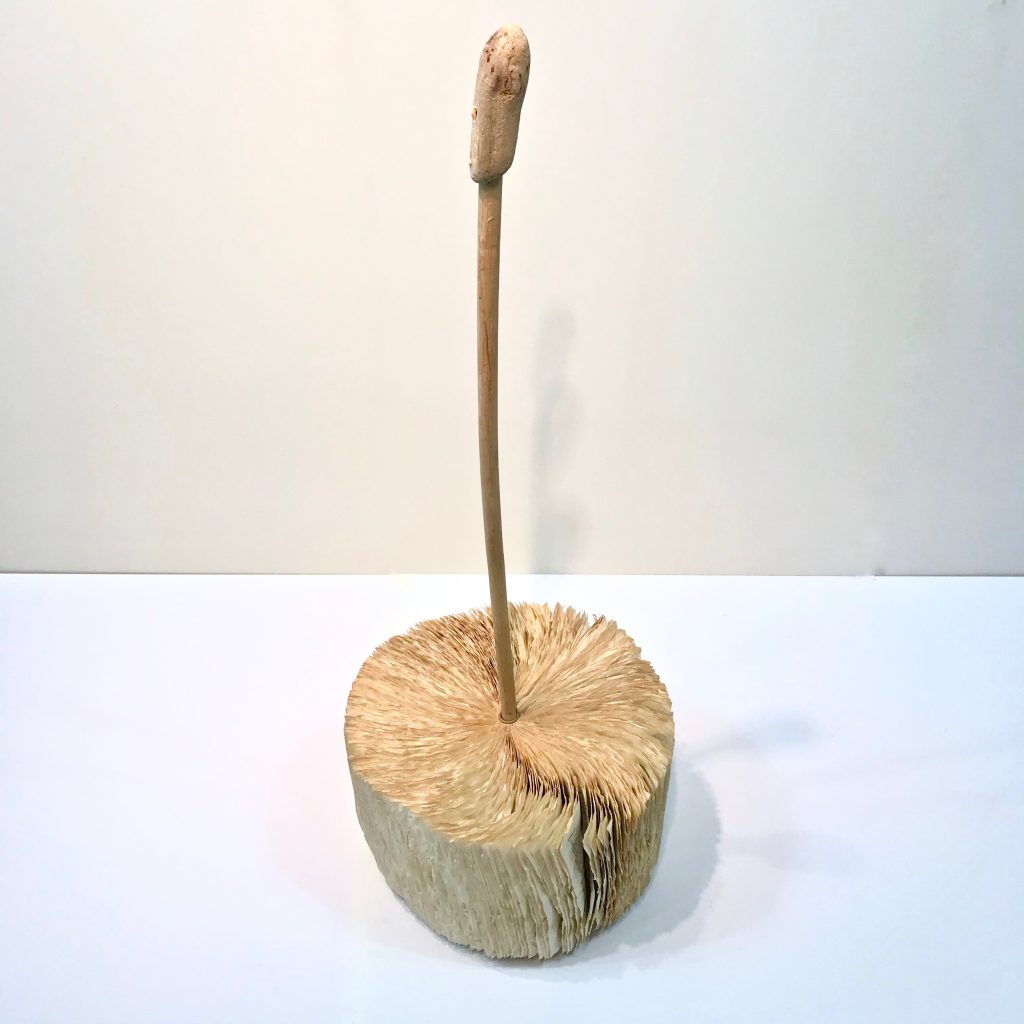
DBF: When I first began making art work about ten years ago I had these dictionaries that I fluffed-up, where I scrunched each page and gave them sort of a permanent hairdo. It took hours. They were in the attic and being eaten up by the silverfish so I gave them to these guys.
PL: I didn’t know what to do with this particular book so I passed it on to Gina.
GT: So, yeah, I put the rod and bulb shape on top of it.
It is such a beautiful object.
DBF: There’s something about it to me that is so absurd. It’s like it is a useful item, highly useful, a dictionary, but it’s divorced from its use. It’s like it has become some other useful item, like someone took a dictionary to another planet and they had no use for it but made it into something else. That’s fascinating to me.
Yeah, and I know what they made it into. A toilet brush (laughter)!
(Discussion about the fact that all three of them work on multiple pieces at any given time.)
Do you ever have a period when you have the equivalent of writer’s block where you don’t work?
PL: I don’t ever get to the point of being bored but I sometimes don’t know what to do but then I just begin and it happens.
GT: I think it’s easier for a sculptor to not have down-time because you can’t possibly make everything you can think of. It’s just more involved, there are more steps in making an object. There are always ideas I haven’t started on.
I always end these interviews by asking the artist what may seem a stupid question and that is, “Why do you do it?” (Why do you make art?)
GT: Because it’s fun and because it’s what I do, I make things. I’m compelled to make stuff with stuff at hand.
PL: It brings me joy to work in my studio. I like to experiment with materials to see what they can do. I never run out of challenges like trying to work disparate elements into a kind of tension and balance with each other. It is so satisfying when that happens.
DBF: I came to this late. I didn’t do any art work until after my dad died in 2011 and then I went into origami. At this point in my life it feels essential. It feels really difficult to not do it. It’s hard to know how that happened because there is a long period of my life when I didn’t do it. At this point it feels essential and it is extremely fun. I think, “Why doesn’t everyone have so much fun with their lives?”
Deborah Benioff Friedman
Phyllis Lasché
Gina Telcocci
